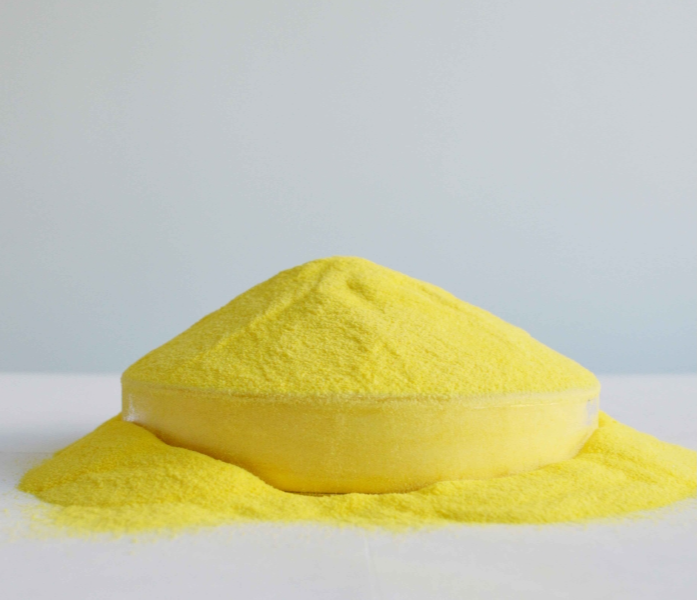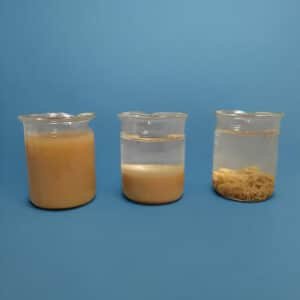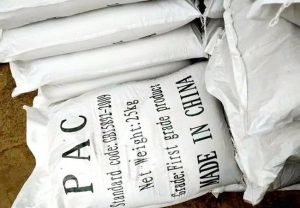
Contents
- 1 Polyaluminum Chloride (PAC): Production, Types, and Quality Guide for Water Treatment
- 1.1 Understanding Polyaluminum Chloride (PAC) and Its Role in Water Treatment
- 1.2 Types of Polyaluminum Chloride (PAC)
- 1.3 How to Identify High-Quality Polyaluminum Chloride (PAC)
- 1.4 Choosing the Right PAC for Your Water Treatment Needs
- 1.5 Conclusion: Selecting the Most Effective Polyaluminum Chloride (PAC), It’s Not About the Highest Concentration, It’s about the Right Fit
Polyaluminum Chloride (PAC): Production, Types, and Quality Guide for Water Treatment
In the complex world of water treatment, achieving crystal-clear, safe water is a science. At the heart of this process for industrial and municipal applications is a powerful coagulant: Polyaluminum Chloride (PAC). With different colors, forms, and concentrations available, selecting the right PAC can be challenging. This guide will explain the production process, classifications, and quality indicators of PAC, helping you make the best choice for your water treatment application.
For further context on water treatment safety, refer to the WHO Drinking Water Quality Guidelines and US EPA Coagulation Guidance.

Understanding Polyaluminum Chloride (PAC) and Its Role in Water Treatment
Polyaluminum Chloride (PAC) is an inorganic polymer coagulant widely used in water and wastewater treatment. Its primary function is to remove suspended particles, colloids, and organic matter, improving water clarity and quality. PAC is valued for its high coagulation efficiency, adaptability to varying water conditions, and cost-effectiveness.
For deeper scientific studies on PAC performance, see ScienceDirect – PAC and PAFC Performance.
What Is Polyaluminum Chloride (PAC)? Composition and Production Process
The production of PAC involves precise chemical engineering. The process begins in a reaction tank, where industrial hydrochloric acid is combined with aluminum sulfate under constant agitation and heating.
Next, calcium aluminate powder is introduced, initiating polymerization to form complex aluminum chlorohydrate chains—the active component of PAC. The resulting PAC mother liquor is the basis for the final product.
Post-processing determines the PAC’s final quality and form:
-
Rotary Drum Drying: The mother liquor is dried in a heated rotating drum, producing coarse yellow-brown granules with an Al₂O₃ content typically below 28%. This is cost-effective for general industrial applications.
-
Filtration & Drum Drying (Enhanced Purification): For higher-purity PAC, the mother liquor is filtered through a plate-and-frame filter press to remove insoluble particles before drying. This produces light yellow granules with Al₂O₃ content at or above 28%, ideal for drinking water applications.

Types of Polyaluminum Chloride (PAC)
Understanding PAC types ensures you select the most suitable product for your specific water treatment needs. PAC is classified by production process, purification level, and chemical composition.
Drum-Dried PAC vs. Spray-Dried PAC: Which Is Right for You?
-
Drum-Dried PAC (Granular): Produces coarse granules that dissolve efficiently with agitation. Best for large-scale industrial wastewater treatment where cost-effectiveness is important.
-
Spray-Dried PAC (Powdered): The mother liquor is atomized into a hot chamber, forming fine powder with higher alumina content and rapid dissolution. Suitable for applications requiring fast reaction times and high efficiency, such as municipal water treatment.
Color Classifications of PAC: Yellow-Brown vs. Light Yellow
-
Yellow-Brown PAC: Undergoes only sedimentation before drying. Economical and suitable for standard industrial applications, though it contains more water-insoluble substances.
-
Light Yellow PAC: Undergoes plate-and-frame filtration, resulting in high-purity PAC. Ideal for drinking water treatment and sensitive applications where low turbidity is critical.
Ferric-Enhanced PAC (Polyferric Aluminum Chloride)
Adding iron during production yields red-brown PAC, also called Polyferric Aluminum Chloride (PFC). It is highly effective for phosphorus removal and treating colored wastewater from industries such as textile and tannery.
How to Identify High-Quality Polyaluminum Chloride (PAC)
Selecting the right PAC requires attention to both physical and chemical characteristics.
Visual and Physical Indicators of PAC Quality
-
Dryness & Flowability: High-quality PAC should be dry, free-flowing, and not clumped. Moisture indicates reduced effectiveness.
-
Particle Uniformity: Consistent particle size avoids dosing inconsistencies and ensures smooth dissolution.
Chemical Composition: Alumina Content, Insolubles, and Heavy Metals
Always request a Certificate of Analysis (CoA) to verify:
-
High Alumina Oxide (Al₂O₃) Content: Higher Al₂O₃ means a more potent coagulant, requiring lower dosage and improving cost-efficiency.
-
Low Water-Insoluble Content: Reduces residual sludge and prevents clogging of pumps or filters.
-
Low Heavy Metal Content: Essential for potable water applications. Ensure compliance with national and international safety standards. e.g., WHO Guidelines.
Choosing the Right PAC for Your Water Treatment Needs
The “best” PAC depends on your water type, application, and treatment goals.
Matching PAC Type to Application: Industrial vs. Drinking Water
-
Industrielle Abwässer: Drum-dried, yellow-brown PAC is sufficient and cost-effective for high-pollution water with high turbidity or organic load.
-
Drinking Water: Light yellow, spray-dried PAC with low heavy metals is required for potable water treatment to meet strict quality standards.
Cost-Efficiency Tips When Selecting PAC
-
Avoid using high-purity PAC where it’s not necessary; it can be unnecessarily expensive.
-
Match PAC concentration and form to water temperature, treatment scale, and required reaction time.
-
Conduct small-scale trials to optimize dosage and ensure treatment efficiency.
Conclusion: Selecting the Most Effective Polyaluminum Chloride (PAC), It’s Not About the Highest Concentration, It’s about the Right Fit
The optimal PAC is not always the highest concentration product. By understanding production methods, color codes, and quality indicators, you can select the most efficient, cost-effective, and safe PAC for your water treatment project.
Need expert guidance? The team at WaterCareChem can analyze your water profile and recommend the ideal PAC type for your facility. Contact us today for a personalized consultation and high-quality water treatment solutions.
Last Updated on 2025-09-27 by system

3 thoughts